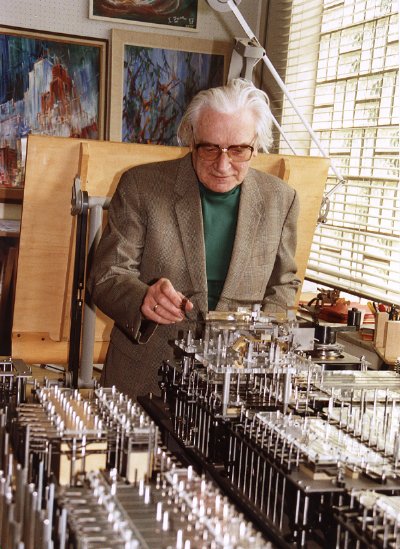History of Computers - Programmable Digital Computing Machine
Brian White

Between 1936 and 1941 Konrad Zuseworked on programmable digital computing machine, but in 1941 he completed the Z3 which utilized the binary number system and could perform floating-point arithmetic which could be used for complicated arithmetic calculations(footnote?).
Contents
Overview
From 1939 to 1941 Zuse created the Z3 to demonstrate that it was possible to build a reliable, freely programmable computer based on a binary floating point number and switching system, which could be used for very complicated arithmetic calculations. For reliability reasons he used relays for the entire machine (footnote?). Zuse's machine had almost all the parts and capabilities of a modern computer defined by John von Neumann in 1946. The only thing missing was the ability to store memory because the 64-word memory was to small to complete this type of operation. The system also contained a punch tape reader, control unit, floating-point arithmetic unit, and input/output devices. The machine also had a special operating mode; the Lu instruction stopped the program that was being used, activating the input system. The user could then check Registers R1 and R2 in the arithmetic unit, perform intermediate calculations using the Registers R1 and R2, and then continue running the program. Konrad Zuse also used Plankalkül ("Plan Calculus")which is a language he created to program his computers The Z3 was the most advanced computing machine of its time.
Significance
Konrad Zuse's machine helped introduce the binary system which is essential to computer programming today. Binary arithmetic has advantages when programming computers because 0 and 1 can be used pair circuits, to store numbers, and to operate with them.
References
http://inventors.about.com/library/weekly/aa050298.htm
Links
http://en.wikipedia.org/wiki/Z3_(computer)
http://www.juliantrubin.com/bigten/zusecomputer.html
http://www.zib.de/zuse/Inhalt/Kommentare/Html/0677/0677.html
http://teeksaphoto.org/Archive/DigitalTimeline/DigitalTimeLineWeb2.html